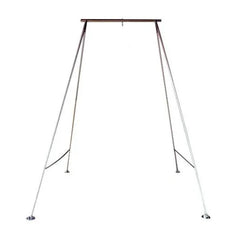In life and in aerial arts, the ability to harmonize with natural forces is one of the most effective tools you can employ. As you perfect the art of harnessing universal energies and translate them to the Lyra and other apparatuses, you become a true force to be reckoned with.
Gravity has its lessons to teach, and as aerial artists, we rebel against the law. This is part of what makes an aerial performance so deeply compelling, speaking to a primal aspect of the human psyche that yearns to break free and fly.
The lessons we learn from practicing and perfecting basic aerial skills like spinning are well-earned and apply to many other areas of life.
The Beauty of the Spin
On a visual level, spinning presents a full 360-degree view of the body, which lends a sense of raw openness that a static act may not impart.
A polished spin can also communicate a feeling of freedom, ease, and complete abandon that's intoxicating to viewers. Think of how it feels kinesthetically to spin in the air. Your audience is likely to be living vicariously through your movement!
On a cosmic level, spinning relates to larger universal patterns. Everything in the universe is spinning at all times: planets around their axis, moons around their planets, planets around their stars, stars around the galaxy, and beyond.
A well-rehearsed spin can evoke a number of emotions. Slower, more languid spins might be deliciously sensual and methodical, casting a spell over the crowd and offering an opportunity to build up to an exciting crescendo.
Faster spins can add a mesmerizing drama and thrill as you draw attention to your focal point: you. Later in the act, arresting a fast spin suddenly and with intention can introduce an element of emphasis and character to your performance.
As a performer, you can treat your apparatus like a dance partner with whom you are sharing the spotlight. Remember that the Lyra spins along with you, making amazing shapes by itself. Consider the whole image you're creating with your act. When working on a single-point Lyra, your spins will be complemented by that perfect circle that either frame you, floats above, or below.
Two Spins Styles
There are many ways to spin and mount into the Lyra. For our purposes, we'll focus on two main styles of spins.
The first is a centered spin, where the aerialist is aligned directly under the point. Legs can be in a straddle or together, and the point is overhead.
With an orbiting-style spin, your rotations travel in a wide circle as big as your tether will allow, as in the manège in classical ballet.
Spinning Physics
The single point apparatus attached to a swivel lends itself perfectly to epic spinning. You can do a tight fast spin or open slower for a more languid, sensual effect like molasses. Remember to practice good body mechanics while you work.
You can use the concept known as Conservation of Angular Momentum to give you an advantage.
Start with your legs wide to generate your spin. Having as much mass as you can get as far from the axis of rotation as you can get it is ideal. This will make it seem more difficult to spin fast as you're getting going, but will ultimately result in the most angular momentum. Then, when you bring your legs in, your mass comes closer to the axis of rotation and angular momentum is conserved by speeding up your spin dramatically.
For all spins, start with your center of mass directly under the point. For most, the center of mass is located at the hips.
If you're using a foot as your pivot point, put it out as far to the side as possible to get the maximum angular momentum. This will also help sustain the spin through the act. If you tend to slow and stop, you can choreograph a moment to come to the floor and generate a new spin.

Dizziness
Some discover that they experience dizziness and even nausea during and after spinning, especially on their first few attempts. Lyra and Cyr wheel artists, skydivers, and ice skaters are just a few types of artistic athletes who must master the art of the spin in service to their discipline.
If you get dizzy, don't despair! There are many remedies.
One suggestion is to train harder and smarter. When you train your spin regularly, efficiently, and at a good pace for your body, you might find that the dizzyness and upset stomach just magically disappear on their own as your brain realizes that spinning is a positive experience. Practice makes perfect, and after a while, you're likely to forget all about your discomfort.
With slower spins, spotting can help a little, as you might when you're turning multiple pirouettes, but this is impractical in faster spins.
Try to focus your gaze on a part of your body like your hand, foot, or knee that's spinning with you, and therefore holding still relative to your vision. This is particularly helpful for faster spins.
Some aerialists swear by eating crystallized ginger as an antidote to a hoop-induced upset stomach.
Stay attentive to your self-care. Whenever you are undertaking an intense workout like aerial arts, make sure you're getting good nutrition, hydration, and sleep. This can armor your body against the rigors of aerial work and will be necessary if you want to take it to the next level (and don't we all?).
Mastering the aerial arts lends itself to learning more about life. You can discover first hand a cause and effect with things like nutrition, sleep, staying positive, and warming up. The practice may teach you to go with the flow. The efficiency of movement, as can be observed so eloquently in animals, can be carried over into daily life. You might reveal such commitment to your art that growth is the only possible path.




Leave a comment